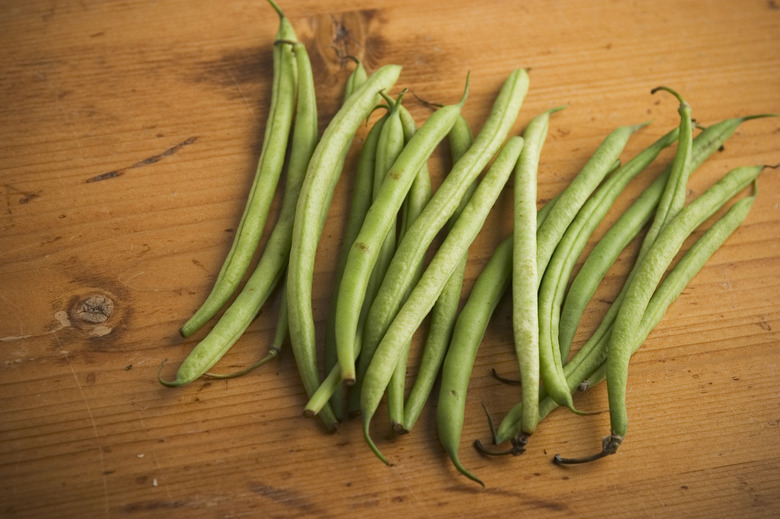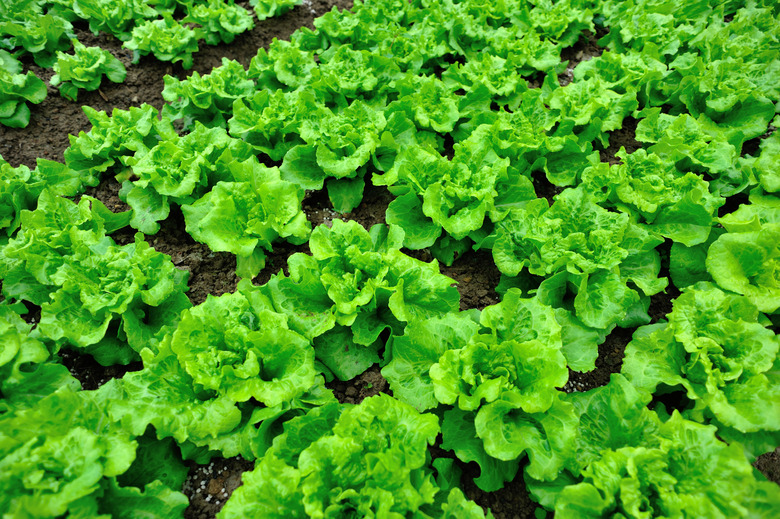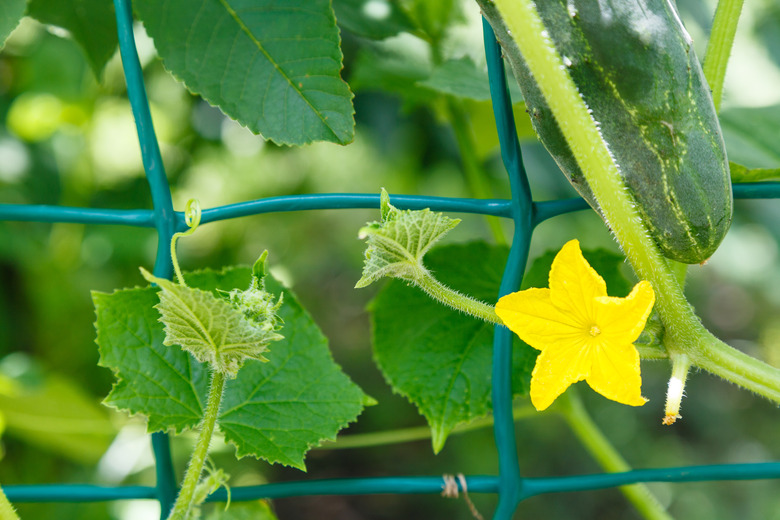List Of Acid-Loving Vegetable Plants
Although a variety of vegetables grow best in slightly acidic or causes-acidic-soils.html'>acidic soils, there's a limit to the level of acidity plants can tolerate. Acidity is measured on the so-called pH scale, ranging from 1 to 14. Unlike temperature, the pH scale changes by a factor of 10 for each unit. So a pH of 6.0 is 10 times more acidic than a pH of 7.0, and a pH of 5.0 is 100 times more acidic than a pH of 7.0. Seven is neutral, and pH numbers above 7.0 indicate alkaline conditions, which are essentially the opposite of acidic.
There are no strict cutoff numbers or formal definitions for slightly acidic versus acidic, but as a rule of thumb, consider pH numbers between 6.0 and 7.0 as slightly acidic and those below 6.0 as acidic.
Vegetables That "Like" Slightly Acidic Soils
Slightly Acidic to Alkaline
Cabbage (Brassica oleracea 'Capitata') and beets (Beta vulgaris 'Crassa') are two vegetable crops that have a fairly broad optimal pH range, including up into the alkaline range, between 6.0 and 8.0. Peas (Pisum sativum) and spinach (Spinacia oleracea) prefer a range between 6.0 and 7.5
- Although a variety of vegetables grow best in slightly acidic or acidic soils is measured on the so-called pH scale, ranging from 1 to 14.
- There are no strict cutoff numbers or formal definitions for slightly acidic versus acidic, but as a rule of thumb, consider pH numbers between 6.0 and 7.0 as slightly acidic and those below 6.0 as acidic.
- Cabbage (Brassica oleracea 'Capitata') and beets (Beta vulgaris 'Crassa') are two vegetable crops that have a fairly broad optimal pH range, including up into the alkaline range, between 6.0 and 8.0.
Slightly Acidic
Lettuce (Lactuca sativa), summer squash (Cucurbita pepo), winter squash (Cucurbita maxima), cauliflower (Brassica oleracea 'Botrytis'), radishes (Raphanus sativas), chives (Allium schoenoprasum), celery (Apium graveolens), broccoli (Brassica oleracea 'Italica'), endive (Cichorium endiva) and carrots (Daucus carota) have a preferred pH range of 6.0 to 7.0.
Vegetables That Like Acidic Soils
Test Your Soil
There's no reliable way to guess about or estimate soil pH, so having the soil tested is the best approach to ensuring that your vegetables have the proper acidity levels. The Cooperative Extension System offices in your state can help with this.
Cucumbers (Cucumis sativus), eggplants (Solanum melongena), peppers (Capsicum annuum), beans (Phaseolus vulgaris), rutabaga (Brassica napus 'Napobrassica') and parsnips (Pastinaca sativa) are all suited to acidic soils down to a pH of 5.5. Add to these tomatoes (Lycopersicon esculentum), pumpkins (Cucurbita spp.) and sweet corn (Zea mays) — suited to a pH range between 5.5 and 7.5. Potatoes (Solanum tuberosum) are something of a special case, with an optimal low end limit of 5.0 on the pH scale.
- Lettuce (Lactuca sativa), summer squash (Cucurbita pepo), winter squash (Cucurbita maxima), cauliflower (Brassica oleracea 'Botrytis'), radishes (Raphanus sativas), chives (Allium schoenoprasum), celery (Apium graveolens), broccoli (Brassica oleracea 'Italica'), endive (Cichorium endiva) and carrots (Daucus carota) have a preferred pH range of 6.0 to 7.0.
- Cucumbers (Cucumis sativus), eggplants (Solanum melongena), peppers (Capsicum annuum), beans (Phaseolus vulgaris), rutabaga (Brassica napus 'Napobrassica') and parsnips (Pastinaca sativa) are all suited to acidic soils down to a pH of 5.5.
Tip
Besides their ability to tolerate such acidic soil conditions, potatoes are a special case for another reason. They are susceptible to the fungal disease potato scab. The potato plant's optimal pH range extends up to 6.5, but those higher pH levels favor the pathogen that causes the scab disease. So a soil pH between 5.0 and 5.2 can greatly reduce the infection rate.


